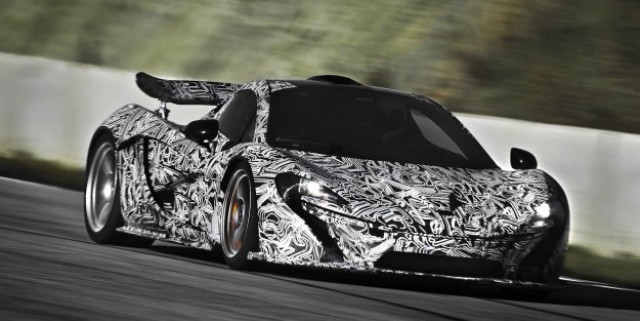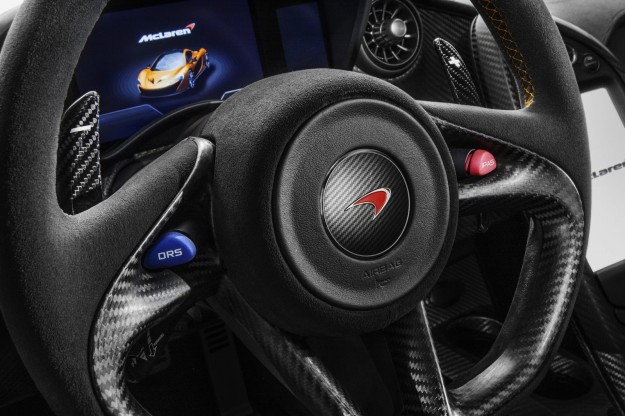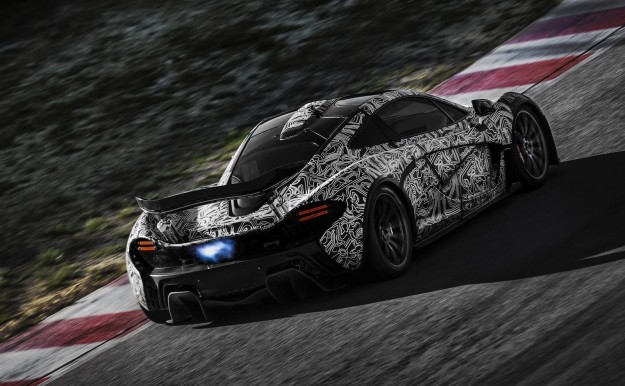
The McLaren P1 will feature a hybrid drivetrain capable of producing an almighty 673kW and technology allowing it to operate in pure-electric mode.
McLaren has confirmed its upcoming McLaren F1 successor will team a significantly upgraded version of the MP4-12C’s 3.8-litre twin-turbocharged V8 petrol engine with a lightweight electric motor and Formula One-derived systems that provide an instant power boost and enhanced straight-line speed.
With a unique casting, revised cooling systems and the use of specific lubrication and hydraulic fluids, the McLaren P1’s mid-mounted V8 has been tuned to produce 542kW and 720Nm – in increase of 82kW/120Nm over the MP4-12C.

Paired with a 132kW/260Nm electric motor that is mounted directly onto the engine, the McLaren P1 has a combined output of 673kW and 900Nm, which it channels through a seven-speed dual-clutch transmission to the rear wheels
Those figure put the P1 in elite company, easily accounting for the Lamborghini Aventador (515kW/690Nm) and upcoming Porsche 918 (circa-574kW/750Nm), and daring to push hypercar royalty, the Koenigsegg Agera (701kW/1100Nm) and the Bugatti Veyron (736kW/1250Nm).
McLaren is yet to reveal performance data, but the numbers suggest it’s likely to nudge a 2.5-second 0-100km/h time and a 350km/h-plus top speed.

Aiding its high-speed aspirations is a Drag Reduction System (DRS), which reduces the angle of a moveable flap on the rear wing to reduce drag by 23 per cent, improving aerodynamics. The system is activated by holding the blue button on the steering wheel, and deactivates when the button is released or if the driver touches the brake pedal.
Pressing the matching red button on the right-hand side of the wheel activates the Instant Power Assist System (IPAS), which provides an immediate 132kW blast from the electric motor delivering a rapid burst of acceleration.
The electric motor derives its energy from a battery that weighs 96kg and claims the greatest power density of any automotive battery pack on sale today.

The battery, which can either be charged by the engine or via a plug-in charger, contains enough energy to power the car without assistance from the engine for more than 10km, resulting in zero-emission driving.
More details of the McLaren P1 will be revealed in the lead up to the unveiling of the production car at the 2013 Geneva motor show on March 5.





